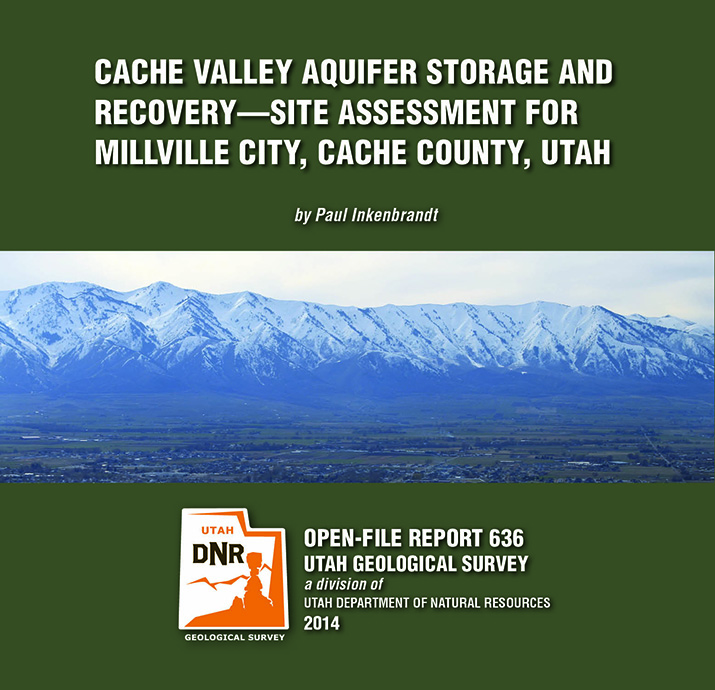
Contact
Tom Chidsey
801-537-3364
tomchidsey@utah.gov
Bulletin 138, Produced Water in the Uinta Basin, Utah: Evaluation of Reservoirs, Water Storage Aquifers, and Management Options
Salt Lake City (Nov. 29, 2017) — Oil and gas fields in the Uinta Basin of eastern Utah typically produce about 30 million barrels of oil and 325 billion cubic feet of natural gas annually. The hydrocarbon production also generates over 100 million barrels of saline non-potable water which requires disposal. A new Utah Geological Survey report addresses how to deal with this water.
Extensive drilling for gas in “tight” sandstones in the eastern part of the basin generates a need for water disposal, while in the central basin expanding enhanced oil recovery (EOR) programs, called waterflooding, creates a need for water. Although drilling activity is currently low in Utah, and elsewhere, due to depressed oil and gas prices, existing fields continue to produce. As wells mature, water production increases while oil and gas production decreases. In addition, oil and gas prices change depending on the economics of global market supply and demand. History has shown that these prices always rebound. The environmentally sound disposal of produced water affects the economics of the hydrocarbon resource development in the basin. Specific Uinta Basin water issues include water use/reuse for well drilling and completion (e.g., hydraulic fracturing), appropriate sites for disposal/reuse of water, development of systems to manage the produced water streams, and differing challenges for gas versus oil producers.
This new study by the Utah Geological Survey (UGS) covers the geology, chemistry, and best practices related to saline water production in the Uinta Basin. Specifically, it includes (1) descriptions and maps of Uinta Basin reservoirs and aquifers, (2) statistical trends of the basin’s water quality, (3) overviews of produced-water facilities, and (4) recommendations for the best management practices and options to deal with the produced water. Appendices provide complete data compilations either collected or generated as part of this study. The report provides a framework to address the divergent water uses and disposal interests of various stakeholders and will help industry, particularly small producers, and regulators make optimum management decisions. The report also offers sound scientific information to allay public concerns about the potential for drinking-water contamination from hydraulic fracturing and production operations.
The 279-page Utah Geological Survey Bulletin 138, Produced Water in the Uinta Basin, Utah: Evaluation of Reservoirs, Water Storage Aquifers, and Management Options, is available (PDF) for free download from the UGS website at geology.utah.gov. Print-on-demand copies are available for purchase from the Utah Department of Natural Resources Map and Bookstore, 1-888-UTAHMAP, www.mapstore.utah.gov.
This research was funded by the Research Partnership to Secure Energy for America (RPSEA) through the “Small Producers Program,” authorized by the U.S. Energy Policy Act of 2005, and the National Energy Technology Laboratory of the U.S. Department of Energy, with additional support from the UGS. The UGS also collaborated extensively with sister regulatory agencies within the Utah Department of Natural Resources (Division of Oil, Gas and Mining, Division of Water Rights, Division of Water Resources) and other agencies such as the Utah Division of Environmental Quality, U.S. Bureau of Land Management, and U.S. Environmental Protection Agency, as well as tribal authorities in the Uinta Basin. Participating industry partners were Anadarko Petroleum Corp., EOG Resources, Inc., QEP Resources, Inc., Wind River Resources, and Newfield Exploration.
The Utah Geological Survey, a division of the Utah Department of Natural Resources, provides timely scientific information about Utah’s geologic environment, resources, and hazards.















 GET IT HERE
GET IT HERE

